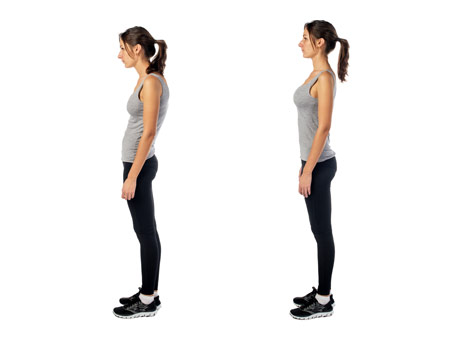Certified Postural Corrections
A Good Posture
Posture is the position in which you hold your body upright against gravity while standing, sitting or lying down.
Home > Our Services > Certified Postural Corrections > The Principles of Posture
Good posture involves training your body to stand, walk, sit and lie in positions where the least strain is placed on supporting muscles and ligaments during movement or weight-bearing activities. Maintaining good posture involves training your body to move and function where the least strain is placed on the body. Proper posture improves the physiologic function of your body, while improving your appearance.
To maintain proper posture, you need to have adequate muscle flexibility and strength, normal joint motion in the spine and other body regions, as well as efficient postural muscles that are balanced on both sides of the spine. In addition, you must recognize your postural habits at home and in the workplace and work to correct them, if necessary. Your posture has a positive or negative influence on the daily activities that you do.
It demonstrates confidence, balance, pain free movement and enhanced physiologic function of your body. Whereas poor posture causes additional stress to the body, spinal degeneration, and diffuse pain. Simply correcting your posture can enhance the quality of your life and overall health. Poper posture promotes movement efficiency and endurance and contributes to an overall feeling of well-being.
The return on investment for better posture will be astounding in later years. We simply cannot afford to neglect our postural needs, especially when so much of our ability to function is riding on the quality of our postural alignment.

Core Musculatures Effect On Posture
The “core musculature” is comprised of several groups of muscles including the transversus abdominus, multifidus, diaphragm and pelvic floor muscles. These muscles work together to produce maximum stability in the abdominal and lumbar region, as well as coordinate movements of the body.
A very common cause of low back pain is weak core musculature. When the muscles that support the spine are weak, pain can be triggered by muscle strain, and injuries to the muscles, ligaments, and discs that support the spine. Over time, a muscle injury that has not been managed correctly may lead to an overall imbalance in the spine. This can lead to constant tension on the muscles, ligaments, and bones, making the back more prone to injury or re-injury. Core exercises are an important component of any postural correction program. Core exercises train the muscles in your pelvis, lower back, hips and abdomen to work in harmony. This leads to better balance and stability, whether on the playing field or in daily activities. In fact, most sports and other physical activities depend on stable core musculature.
Strong core muscles make it easier to do most physical activities, whereas weak core muscles leave you susceptible to poor posture, lower back pain, and muscle injuries. It pays to get your core muscles in better shape.
The Benefits Of Proper Posture
- Keeps bones and joints in the correct alignment so that muscles are being used properly and efficiently.
- Helps decrease the abnormal wearing of joint surfaces that could result in arthritis.
- Decreases the stress on the ligaments holding the joints of the spine together.
- Optimizes breathing and circulation.
- Prevents the spine from becoming fixed in abnormal positions (for example an abnormal lateral curvature, or scoliosis).
- Prevents fatigue because muscles are being used more efficiently, allowing the body to use less energy.
- Improves organ function.
- Prevents strain or overuse problems.
- Prevents backache, neck pain, and diffuse muscular pain.
- Contributes to a good appearance.
The Consequences Of Poor Posture
- Decreased Life Span (up to 14 years).
- Headaches.
- Chronic Fatigue.
- Neck & Back Pain.
- Increased blood pressure.
- Digestive Problems.
- Problems Sleeping.
- Circulatory Problems.
- Respiratory Issues.
- Increase in Falls.
- Vertigo/dizziness.
- Attention/concentration problems.
- Muscle fatigue.
- Decrease in overall health.
- Spinal degeneration.
- Arthritis.
- Herniated discs.
- Sciatica.
- Knee and ankle problems.
- Carpal Tunnel.
- Plantar fasciitis.
Book online today.
Book your Assessment with our team to see how we can help you with your goals.





